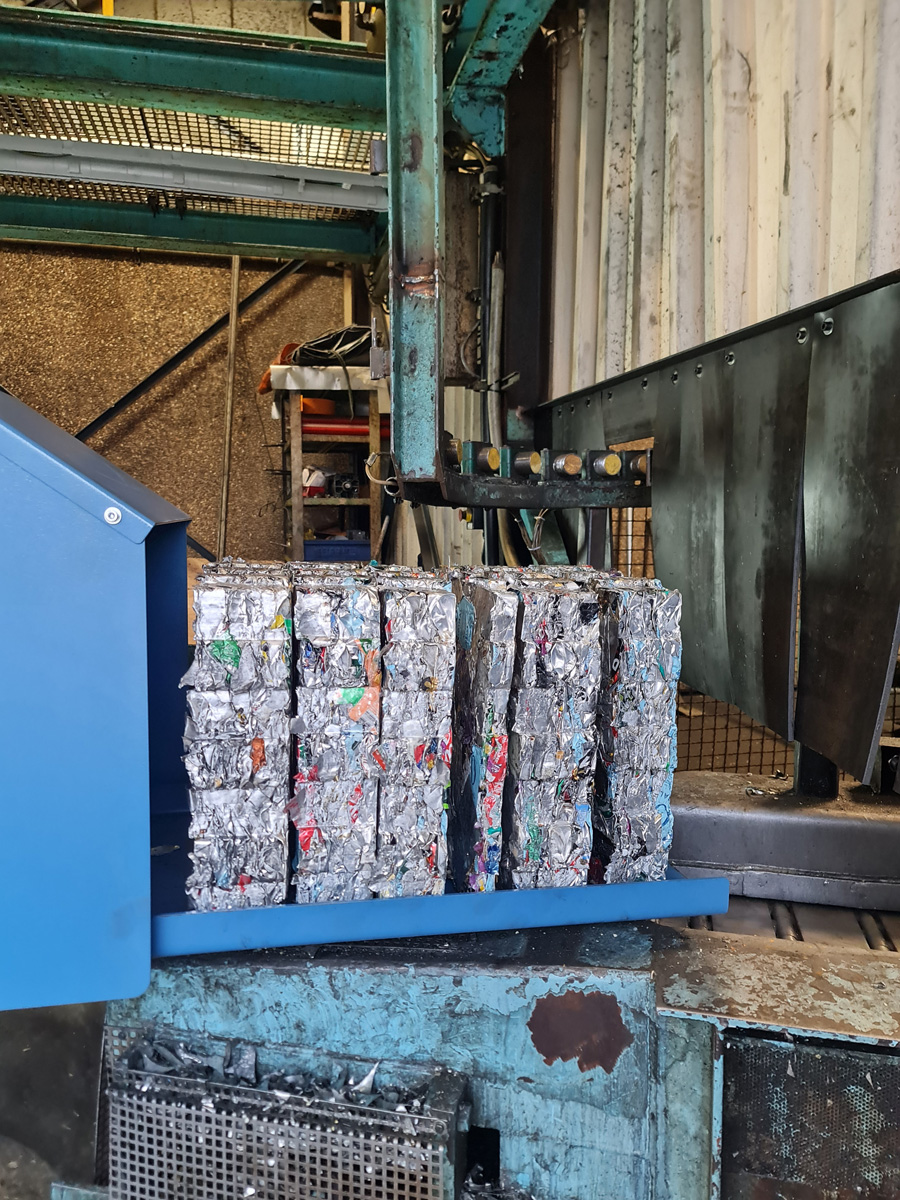Balers are machines designed to compress waste materials
such as cardboard, paper, plastic, and metal into compact bales so they can be
easily stored and recycled. By reducing waste volume, storage space is
increased, and the balers also provide cost-saving benefits as transportation
expenses are reduced, and businesses can sell baled materials to recycling
facilities. Along with the economic advantages, balers help to work towards
sustainability goals as they reduce carbon emissions from fewer transport trips
and support recycling efforts by minimising landfill use. Additionally, they
boost operational efficiency by streamlining waste management, improving
workplace safety, and maintaining a more organised environment.
integratedAIR systems approached this project with a focus
on integration, precision, and efficiency. The existing conveyor logic and
operation were retained. The new baler infeed chute was custom-designed to
match the current conveyor drop position which ensured coherent integration.
The drop chute feeding line scrap to the baler was modified
to align with the new baler’s infeed and scrap discharge position. The existing
conveyor’s functionality was left untouched for the whole can infeed, with a
custom-designed baler infeed chute ensuring a perfect fit with the current
conveyor drop point.
The bypass conveyor, which previously moved into position
when the baler was unavailable, was adjusted and fixed into position for
simplicity. A divert was added to the line scrap drop chute, allowing scrap to
be redirected without the need for conveyor movement. This enabled efficient
redirection of scrap when the baler was unavailable.
The new baler was raised to align with the existing
discharge conveyor. A dead plate extension ensured that bales could seamlessly
transfer to the dumpster conveyor without altering its setup. The bale outfeed
system remained unchanged, but the new baler was raised to align with the
existing discharge conveyor. A dead plate extension was installed to ensure
that bales transitioned smoothly to the dumpster conveyor without requiring
modifications.
The installation was carefully planned to fit within a tight
shutdown schedule, and the client removed the obsolete baler before the
integratedAIR team began working with it. Over the next two days, modifications
were made to the area beneath the scrap drop chute, preparing it for the new
baler. Once the baler was positioned, the remaining work was completed, with
integratedAIR’s five-person team ensuring all systems were fully operational
before the shutdown ended.
The successful installation of the Austropressen DS-700
baler considerably enhanced the reliability of the client’s scrap management
system. Importantly, it maintained compatibility with existing baler components
that could still be used. Despite the complexity of the setup, integratedAIR’s
solution minimised disruption, avoided unnecessary modifications and provided a
solid foundation for future system improvements.
